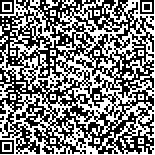下载中心
优秀审稿专家
优秀论文
相关链接
摘要

区域尺度上精准、快速的作物单产估算可以有效地为国家粮食安全相关政策的制定提供数据支撑。本文针对县级估产时相和特征类型选择问题,基于遥感、气象和统计等多源数据,通过不同时相和特征要素之间的组合分析来探索其对于县级尺度冬小麦单产估算的影响。特征要素主要考虑作物长势、环境(水分和光温条件)和农田景观3个类型;时相主要考虑由冬小麦生长过程NDVI(Normalized Difference Vegetation Index)曲线特征提取的5个关键时段(P1—P5)。利用不同时相与类型特征的组合与统计单产构建随机森林回归模型,根据精度评价结果分析各组合的优劣。2014年—2017年的数据用来建模,2018年数据用来验证。对于单时相,P2、P3、P4的表现明显好于P1和P5;多时相的准确度明显优于单时相,其中P2、P4的组合效果最佳。对于不同类型的特征要素,作物长势特征参量对估产精度的影响最大,而水分影响和光温条件等环境因子的加入对估产准确性并没有明显提升,农田景观参数的加入能够有效提升估产的准确性。在最优组合的基础上,剔除冗余变量优选出5个重要的指标因子(PROP、NDVI_P2、B2_P2、ED、B1_P4),并建立单产估算模型获取2018年河北省冬小麦县级尺度单产。结果表明,平均相对误差(MRE)仅为2.85%,决定系数(R 2)为0.83,均方根误差(RMSE)为253.25 kg/ha,归一化均方根误差(NRMSE)为4.09%。研究结果为全国县级冬小麦单产估算提供了新的思路和方法参考。
Accurate and rapid regional-scale crop yield estimation can provide effective data support for the formulation of national food security policies. Compared with complex mechanism models, sampling statistical surveys and empirical models based on multi-source data have better reliability and operability for county-level or city-level yield estimation. Previous studies have proposed many factors related to winter wheat yield, but systematic research on the selection and analysis of multi-source factors is lacking. On the basis of remote sensing, meteorological, and statistical data, this study systematically explored the influence of key-phase growth-environment-landscape features on winter wheat yield estimation at the county-level and determined the best time phase and characteristic parameters. The considered features included crop condition, environmental forcing (e.g., precipitation, light, and temperature), and farmland landscape. The key phases were the key periods of winter wheat yield formation (P1—P5), which were extracted from the NDVI curve of the crop growth process. Random Forest (RF) regression models were developed using different combinations of phases and features to simulate statistical wheat yield data and evaluate the importance of different combinations via an accuracy assessment. The performance of the models built from each layer combination was compared using the Mean Relative Error (MRE), Root Mean-Squared Error (RMSE), Normalized Root Mean-Squared Error (NRMSE), and coefficient of determination (R 2). Data on years 2014—2017 were used to build the models, and 2018 data were utilized for validation. Results showed that P2, P3, and P4 resulted in higher accuracy than P1 and P5 in terms of single phases. The model accuracy using multi-phase features was higher than that of using single phases, and the combination of P2 and P4 was the best. Among all the features, crop growth features had the greatest impact on yield estimation accuracy, whereas the addition of environmental forcing factors (e.g., water, light, and temperature) did not significantly improve the accuracy. The addition of farmland landscape features could effectively improve the accuracy of yield estimation. Moreover, five important features (PROP, NDVI_P2, B2_P2, ED, and B1_P4) were selected, and a yield estimation model was established to obtain the county-level yield of winter wheat in Hebei Province. The MRE of wheat yield estimation at the county level in 2018 was as low as 2.85%, and the RMSE, NRMSE, and R 2 were 253.25 kg/ha, 4.09%, and 0.83, respectively. Conclusion Multi-phase performance is better than single-phase performance. Combining crop growth features with farmland landscape features (RMSE of 247.79 kg/ha) provides more accurate estimates than using crop growth features alone (RMSE of 295.95 kg/ha). Furthermore, the RF model produces good yield estimation results. This study provides insights into and new methods for nationwide estimation of winter wheat yield at the county level.

